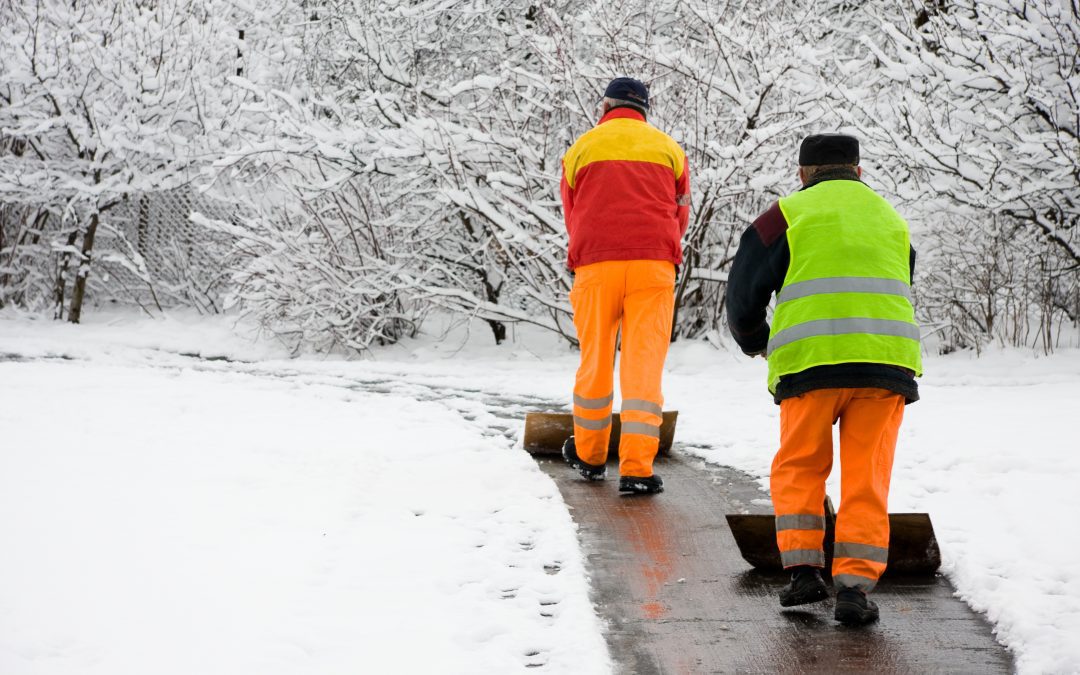As Old Man Winter blankets the ground in a pristine layer of snow, the inevitable task of snow removal becomes a priority. Choosing the right snow shovel can make this chore more efficient and less physically taxing. Let’s explore various types of snow shovels, including scoop shovels and push shovels, highlighting the proper time to use each and designs that can make your shoveling experience a positive one.
Scoop Shovels:

Scoop shovels are designed for lifting and tossing snow. They typically have a curved or flat blade with a wide surface area. Scoop shovels are best used when moving deep snow. Whether light and fluffy, hard and crusty, or wet and heavy, deep snow presents bigger challenges for pushing than scooping with shovels. When it comes to scoop shovels, consider the following features:
 Assist Handles:
Assist Handles:
- The presence of an assist handle or slings can greatly enhance the ergonomic design of a scoop shovel. Some shovels offer additional hand placements, reducing strain on the back and arms during prolonged use. There are also assist handles available for purchase separately that can be added to various models of scoop shovels that can be transferred from one shovel to another in the event of shovel breakage.
- Pros: Improved ergonomics, reduced strain on muscles.
- Cons: Some users may find added features bulkier or less convenient.
- Material and Durability:
- Look for scoop shovels made from durable materials like high-density polyethylene or metal. These materials provide longevity and resilience against heavy snow.
- Pros: Long-lasting, capable of handling heavy loads.
- Cons: Metal shovels may be heavier than their plastic counterparts.
 KAGE Innovation offers a product call “The Buddy Strap” which can attach to any D-handle shovel that serves as a lightweight yet heavy duty assist handle while shoveling and duals as a shovel sling for easy carrying.
KAGE Innovation offers a product call “The Buddy Strap” which can attach to any D-handle shovel that serves as a lightweight yet heavy duty assist handle while shoveling and duals as a shovel sling for easy carrying.
Push Shovels:

Push shovels, designed for pushing or plowing snow, come in various styles. Generally, push shovels work best in less than 2 inches of snow and on paved surfaces like concrete sidewalks or paved driveways. One notable option is the SnowBlaze Steel Cutting Edge Snow Shovel by Kage Innovation. Let’s compare it to other straight push shovels and ergonomic push shovels, as well as shovels on wheels:
- Straight Push Shovels:
- Pros: Simple and easy to use. Suitable for light to moderate snowfall.
- Cons: Limited features for heavy-duty snow removal.
- Ergonomic Push Shovels:
- Pros: Designed with user comfort in mind, reducing strain and fatigue.
- Cons: May come with a higher price tag. Some users may find ergonomic designs less intuitive.
- Shovels on Wheels:
- Pros: Ideal for large areas and heavy snow removal. The wheels make the task less physically demanding.
- Cons: Bulky and may not be as maneuverable in tight spaces.

SnowBlaze Steel Cutting Edge Snow Shovel:
-
- Pros: The steel cutting edge offers increased durability and efficiency in cutting through dense, packed snow. The ergonomic design reduces strain on the user’s back and shoulders. It offers the ability to windrow (like an angle plow) long passes easily.
- Cons: Steel edge can be hard on wooden surfaces such as decks
Selecting the right snow shovel depends on various factors, including the amount of snowfall, the size of the area to be cleared, and personal preferences. Shovels with assist handles and slings offer improved ergonomics, while ergonomic push shovels like the SnowBlaze Steel Cutting Edge Snow Shovel provide efficiency and durability. Ultimately, finding the perfect snow shovel involves considering your specific needs and the demands of your winter environment.



Recent Comments